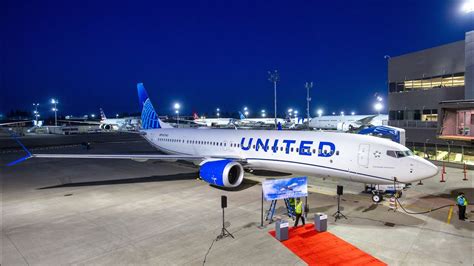The Qantas A380 that had its engine explode is also known as MSN 014 – making it the 14th A380 built. We have received some data from the explosion event that we can share with you.
We are not the first to break this story – for that you can view it here. We can confirm that the presentation on that site is from the official Airbus versi on. But it misses a crucial image which we are sharing.
on. But it misses a crucial image which we are sharing.
The document clearly states the information is proprietary to Airbus and we respect that. With that as a backdrop let’s review what we know and bear the picture in mind. The area between the two gray dashed lines is the where the engine debris went.
The damage consists of the following:
- Massive fuel leak in the left mid fuel tank (the plane has 11 tanks,
including in the horizontal stabilizer) - Massive fuel leak in the left inner fuel tank
- A hole on the flap canoe/fairing that you could fit a male upper body
through - The aft gallery in the fuel system failed, preventing fuel transfer functions
- Fuel jettison problems developed due to the previous problems
- Large hole in the upper wing surface
- Partial failure of leading edge slats
- Partial failure of speed brakes/ground spoilers
- Shrapnel damage to the flaps
- Total loss of all hydraulic fluid in the Green System (A380 has 2×5,000 PSI systems; Green and Yellow)
- Manual extension of landing gear required
- Loss of one generator and associated systems
- Loss of brake anti-skid system
- Inability to shut down #1 engine using normal method after landing due to major systems damage
- Inability to shutdown adjacent #1 engine using using the fire switch
- Therefore, no fire protection available for engine #1 after the explosion in #2
- ECAM warnings of major fuel imbalance because of fuel leaks on left
side, that could not be fixed with fuel cross-feed - Fuel trapped in horizontal stabilizer trim tank. Therefore, possible major center of gravity out-of-balance condition on landing.
Having gone through the litany of events that went wrong after the engine blew, you might wonder how the A380 kept flying. But it did – we understand that the airplane’s backup systems all worked as designed.
The outcome is a combination of miracle and amazing training. Kudos to the crew that deserve as much praise as the BA crew who brought home the 777 that lost all power on final. Clearly their training was of the highest order.
Next the design of the A380 deserves recognition. Think again about the image and the debris field – the Trent 900 was at maximum power when it blew. The damage within the wing was tremendous. If this happened to an airplane even a decade ago, there is a high likelihood the plane would have been lost. Yet even with pieces of metal traveling at high speed, nothing penetrated the cabin. The wing withstood the shock of this well.
We do not want to share images of the damage – look at the linked site for that. But it is clear the damage could easily have brought down the plane. Yet the A380 withstood the damage and made it back.
Fortunately the event occurred close to Singapore – had this happened at cruise over the ocean, the outcome might have been different. Who knows how long the A380 could have stayed aloft with this damage?
We believe the report and images demonstrate the damage was significant, and only underscores the good basic design of the airplane and its well trained crew.
[Update – listen to this podcast: http://iagblog.podomatic.com/entry/2010-11-18T15_00_31-08_00 ]
Views: 11




As a winner of the Australian Air Safety Award (2000) — I would like to recommend this crew for the Award for 2010. More info on this incident from http://www.jamesnixon.com, follow likes to NEWS.
It’s important to note the latest info from Airbus. One set of bogies had normal braking and anti-skid. The crew chose to override braking so they could pull-up near RFF crews.
Also, they had full control of Engines 1, 3 & 4. It was only after they stopped, and tried to use the damaged shutdown system, that they discovered that they couldn’t shutdown Engine One.
The A380 has massive redundancy. Some of the backup systems are revolutionary (Flight Control & Landing Gear) and are the next state of the art – in braking systems it has Normal, Alternate, Emergency AND Ultimate. In this incident only the wing gear was in Alternate without anti-skid (ie the pilots put their foot on the brakes like the old days), the body gear was in Normal WITH anti-skid.
As you say, an aging airliner, such a twenty year old 747, would have been in big trouble indeed.
“an aging airliner, such [as] a twenty year old 747, would have been in big trouble indeed.” – Perhaps, but I would rather be flying on a plane with a rock solid engine design (i.e. one that doesn’t blow up) than one that has all kinds of neat new technologies to help you after the engine blows up. I’m just saying…
Good, professional response of the cockpit crew.
But what would have happened if only the normal basic cockpit crew members (2) would have been available and not 5 crew members with at least two instructors with above average aircraft system knowledge.
Would this basic crew have been overwhelmed with more than 50 failure messages and unable to maintain the aircraft fuel balance (time factor) and nobody left to give a professional damage assessment, as done by a relief pilot in this case.
A very interesting case study, but it would certainly not be supported by Airbus.
“A very interesting case study, but it would certainly not be supported by Airbus.”
Hmm,
Airbus is not known for having unfixed for decades issues ( like prone to smoking windshield heaters ;-).
My guess is that the software guys that do FMS/ACARS/..similar things at Airbus are already “evererunning coffeemaker” deep into improving on the presentation/management issues exposed here.